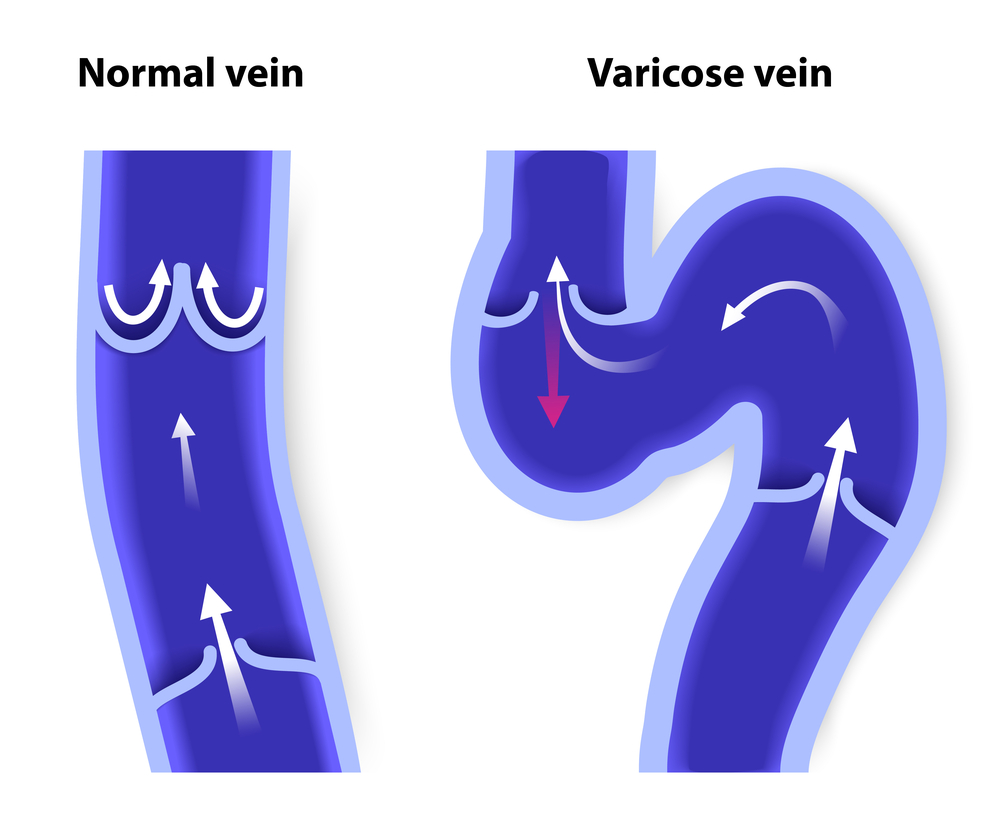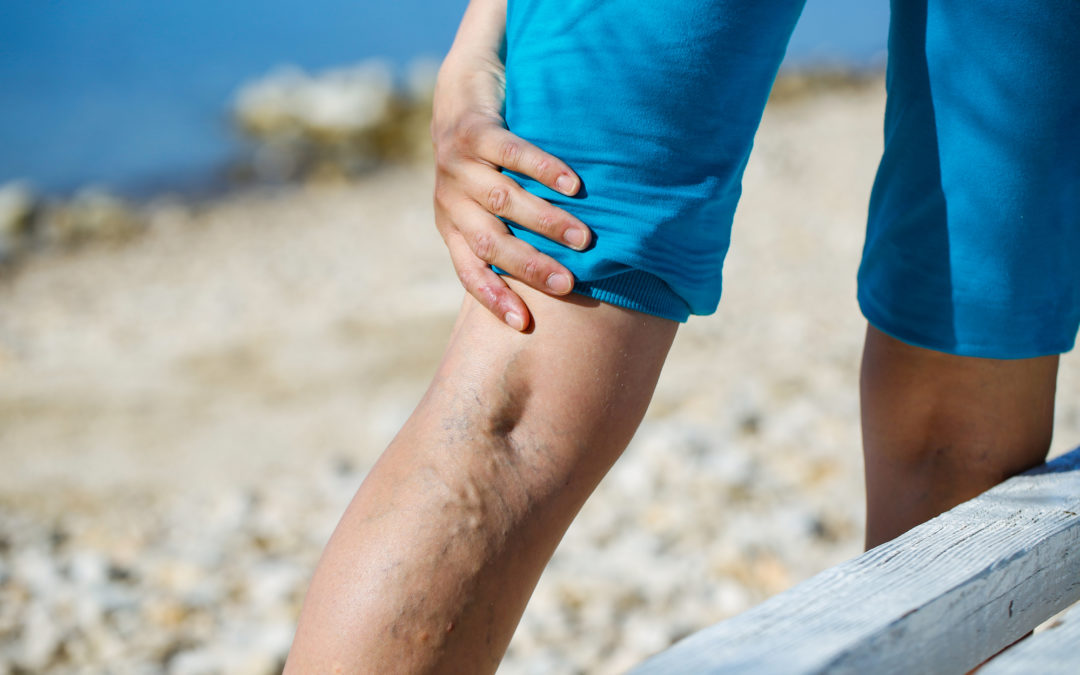What are Varicose Veins?
Varicose veins are a result of Venous Reflux Disease or Chronic Venous Insufficiency which alters the circulation of blood in the body. A normal, healthy vein allows blood flow in one direction back to the heart. If a vein becomes clotted, blocked off or altogether unhealthy it can pass blood through in both directions. This results in the pooling of blood and stretching of the vein into the bulging, blue appearance known as varicose veins.

Symptoms of Varicose Veins?
There are five major symptoms that patients experience. Not all of these symptoms must be present to have varicose veins, although some patients do experience all in some form or another:
- Leg pain
- Leg heaviness
- Leg throbbing
- Leg, ankle, or foot swelling
- Leg itching
How Can I Live With These Symptoms?
People experiencing varicose veins that may not be a candidate for removal include those who are pregnant, elderly or terminally ill. How can these painful symptoms be dealt with or even eliminated? Can the process of poor circulation be stopped or reversed?
Although these treatments will help with the pain and progression of the problem, they will not cure the poor circulation in the affected veins. They can help in preventing new varicose veins from developing and ailing symptoms.
Get Moving
Daily exercise, walking, hiking, biking, swimming, stair climbing, pilates, yoga, or any choice of exercise can help to reduce pooling of blood and alleviate pressure in the varicose veins. Exercise can also lower BMI and stop weight gain which makes your chances of developing more varicose veins less because it eliminates excess pressure on your veins.
Don’t Stay Put – Move Around
Whether you are bed-ridden, on a long car ride, or relaxing by the pool on vacation, do not sit for too long in one position. Circulate your blood flow by moving your legs, flexing your ankles, twisting your muscles and keeping your blood pumping. One trick that works is writing out the alphabet every ten minutes with your feet in the air. Prolonged standing or sitting should also be avoided as it keeps the pressure building up in your veins with no release. If you are able, get up and walk every few hours, especially if you are pregnant.
Elevate
Keep your feet positioned higher than your heart. This level of elevation will reduce blood pooling and keep pressure off of your legs. This can be done with pillows, recliners, folded blankets or wedges that are available to purchase.
Compression Socks
Supported socks or compression stockings are designed to apply counter pressure to your blood flow, allowing it to maintain constant flow back to your heart. Do not hesitate to pick up a pair of compression socks at your local drug store for everyday use or even just a long plane ride. These can be a handy tool in preventing pain and controlling swelling.


Recent Comments